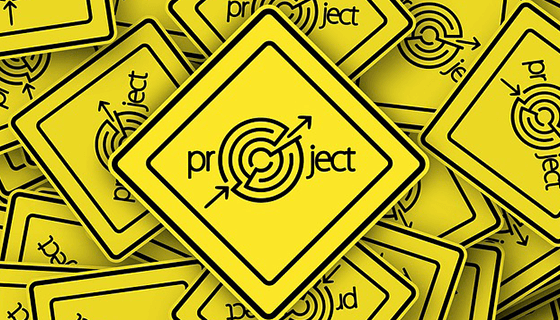15 Secrets of Persuasion to Help You Sell More Online
Persuasion is convincing someone to do something. Great persuasion is convincing them it’s their idea to do it.
The human brain can be influenced through its three systems of…
- primal (sex)
- emotions (empathy)
- rationalization (logic)
When marketing is truly working, it’s appealing to all three of these systems simultaneously.
The classic recipe to do this seems almost too simple to work: First, you use images to trigger the primal brain. Second, you use empathy and a good story to engage the emotional brain. And third, you add proven justifications to support the rational brain.
If you were to stop reading here and simply remember to use all three of these ingredients in every piece of your marketing, you would likely enjoy healthy sales of your products.
But let’s dig deeper and give you 15 tips and insights to make your marketing even more effective and persuasive:
1: Speed. Always keep in mind that internet consumers want instant gratification and quick fixes. This means they’re not prone to deep thinking or patience. 30 second preamble to your video? Remove it and jump straight into the deep end. Long sales letter? Break it up with plenty of subheadlines and make it easy on the eyes to read. Long blogpost? Break it up into sections and add images and illustrations.
2: Never be boring. Goldfish have longer attention spans than humans (less than 8 seconds). If any part of your presentation is boring, you risk losing their attention. See #1 above.
3: Get in their heads. Know exactly who your target market is and speak directly to their emotional needs and desires. What scares them, why does it scare them and how will your solution make them feel?
4: Go to them. How does your audience like to communicate? How do they like to receive their info? Where are they found online? Don’t think they will hunt for you. You’ve got to go to where they already are, and when you get there you’ve got to speak their language.
5: Dig and deliver. Discover what your clients want (not necessarily what you think they should want). Then promise them what they want and deliver it in the most efficient way possible. Think of how easy it is to purchase something on Amazon (one or two clicks) and how fast it’s delivered with zero hassle and you get the picture.
6: Give to get. Robert Cialdini teaches the first principle of persuasion as reciprocity, giving something so that the recipient feels obliged to return the favor. Those lead magnets we offer to get someone on our email list is a classic example. In fact, if you continue to give away free reports to your email subscribers, they will be more likely to open, read and act upon your emails well into the future.
7: Reciprocity II. Giving to get also takes the form of treating others as they like to be treated, so that they treat you the same way. For example, treating your customers with respect and as equals will help them to treat you the same way.
8: Commitment and consistency. When someone joins your list to learn how to lose weight, you can remind them of their commitment to weight loss. This reminds them to be consistent in their actions and follow through by buying and using the product that will help them stay consistent to their commitment.
9: Social proof. There’s a reason so many websites use reviews from product buyers, and it’s because people want to know about the experiences of others, good and bad. Believe it or not, even bad reviews can sometimes sell a product because the very thing the bad review is decrying might be exactly what someone else is looking for. That said, you still need a majority of good reviews and positive testimonials that far outweigh the negative reviews. And just once I would LOVE to see a negative testimonial on a sales letter because it would make everything else on that sales letter so much more believable.
10: Likeability. This one confuses people because they think they have to make EVERYONE like them in order to influence people. However, when you try to please everyone, you please no one. Instead, be yourself and don’t be afraid to state your opinions (within reason, of course) and your point of view. This will indeed alienate some people, but it will also make your ‘tribe’ love you and follow you. These people will become not only your loyal customers but also your advocates.
11: Authority. Oprah is a master at authority. If she says to buy some obscure book, that book suddenly shoots to #1 on the best seller list. But what if you’re not Oprah? You can establish authority over time with your useful content and your vast knowledge of your niche. Or you can borrow authority by interviewing experts and also using expert reviews and testimonials on your blog, your products and anything else you offer.
12: Scarcity. The less there is of something, the more valuable it is. Personally, I’ve probably bought more things because of scarcity than all of these other principles combined. If you’re selling digital items, then your scarcity will likely be in the form of a limited time offer or limited copies of a very special bonus.
13: Repetition of contact. If you want to persuade in person, then the more time you spend with someone the more likely you are to influence them. Online is a little different in that you’re not with them in person. But if they see your blog posts, social media posts, guest posts, videos and emails, pretty soon they feel they know you, like you and can trust you. That’s why when you get someone new on your list you continue to email them daily for essentially as long as it takes to make that first sale or get them to leave your list, either of which is a positive outcome. Remember, you’re not right for everyone, and not everyone is right for you. You are continually in search of your tribe because those are the folks who will grow to love you and buy from you.
14: Like your customers. We spoke about getting people to like you by showing them the real you. But you’ve also got to like them. If you don’t, it will show in your emails, videos and blogposts. Even your photo has to be friendly and likeable. Have you ever instantly disliked someone online because they look smug or unfriendly in their photo? Of course. Before you write or video record anything, get in the frame of mind that you are about to have a chat with your best friend.
15: Overcome objections. Whatever it is that you’re trying to persuade them to do, there will be objections. If you don’t overcome these in your email, your sales letter or video, you won’t make the sale. What are the reasons people don’t buy your product? If you don’t know, find out. Then be open and honest about these reasons. If you’re not sure how to do this, just remember “Feel, felt, found”. For example: “I understand that some people watching this video will feel this is scary. I know because I felt the exact same way. But what I found was that once I got started, it was much easier than I ever imagined.”
What This Guy Stumbled Across By Accident Nearly TWENTY YEARS AGO Is Anything But Average.

It's Still Banking Him $25,000 - $35,000 EVERY SINGLE MONTH!
Privacy Policy: We value your privacy. You can unsubscribe from receiving future emails with 1 click at any time.

















